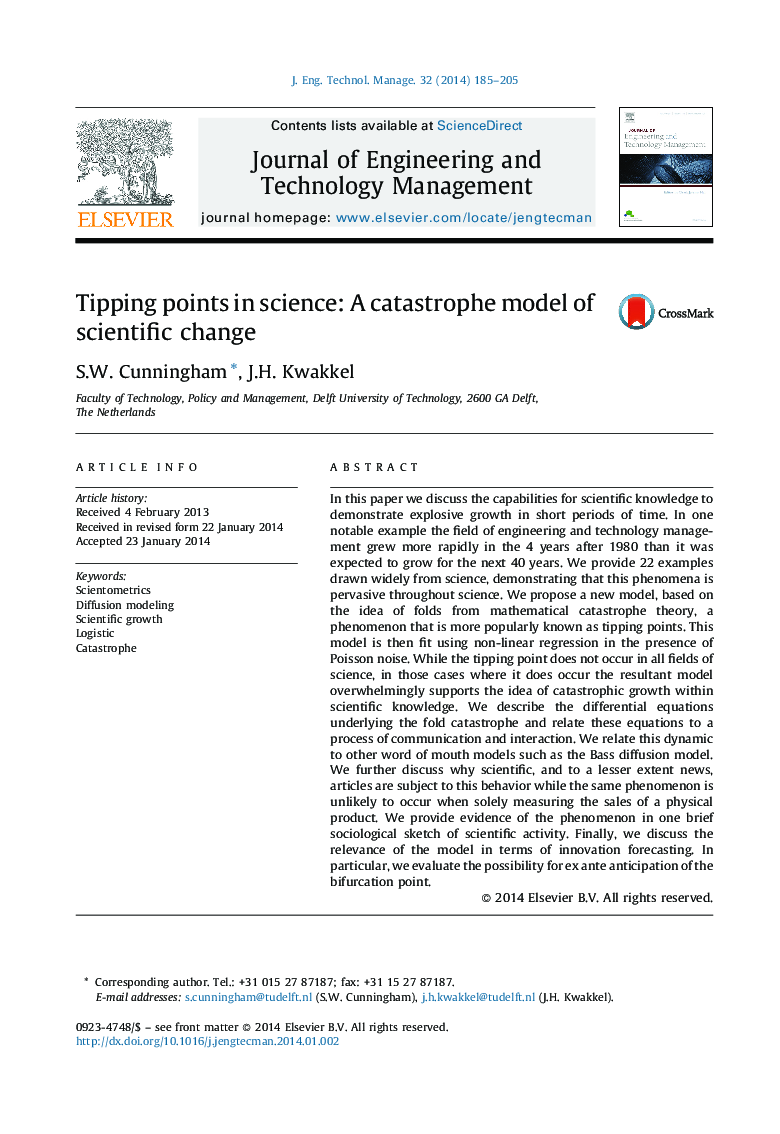| Article ID | Journal | Published Year | Pages | File Type |
|---|---|---|---|---|
| 1006320 | Journal of Engineering and Technology Management | 2014 | 21 Pages |
In this paper we discuss the capabilities for scientific knowledge to demonstrate explosive growth in short periods of time. In one notable example the field of engineering and technology management grew more rapidly in the 4 years after 1980 than it was expected to grow for the next 40 years. We provide 22 examples drawn widely from science, demonstrating that this phenomena is pervasive throughout science. We propose a new model, based on the idea of folds from mathematical catastrophe theory, a phenomenon that is more popularly known as tipping points. This model is then fit using non-linear regression in the presence of Poisson noise. While the tipping point does not occur in all fields of science, in those cases where it does occur the resultant model overwhelmingly supports the idea of catastrophic growth within scientific knowledge. We describe the differential equations underlying the fold catastrophe and relate these equations to a process of communication and interaction. We relate this dynamic to other word of mouth models such as the Bass diffusion model. We further discuss why scientific, and to a lesser extent news, articles are subject to this behavior while the same phenomenon is unlikely to occur when solely measuring the sales of a physical product. We provide evidence of the phenomenon in one brief sociological sketch of scientific activity. Finally, we discuss the relevance of the model in terms of innovation forecasting. In particular, we evaluate the possibility for ex ante anticipation of the bifurcation point.
